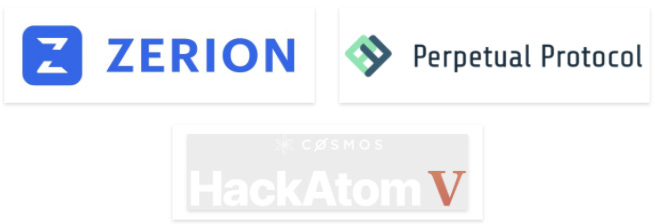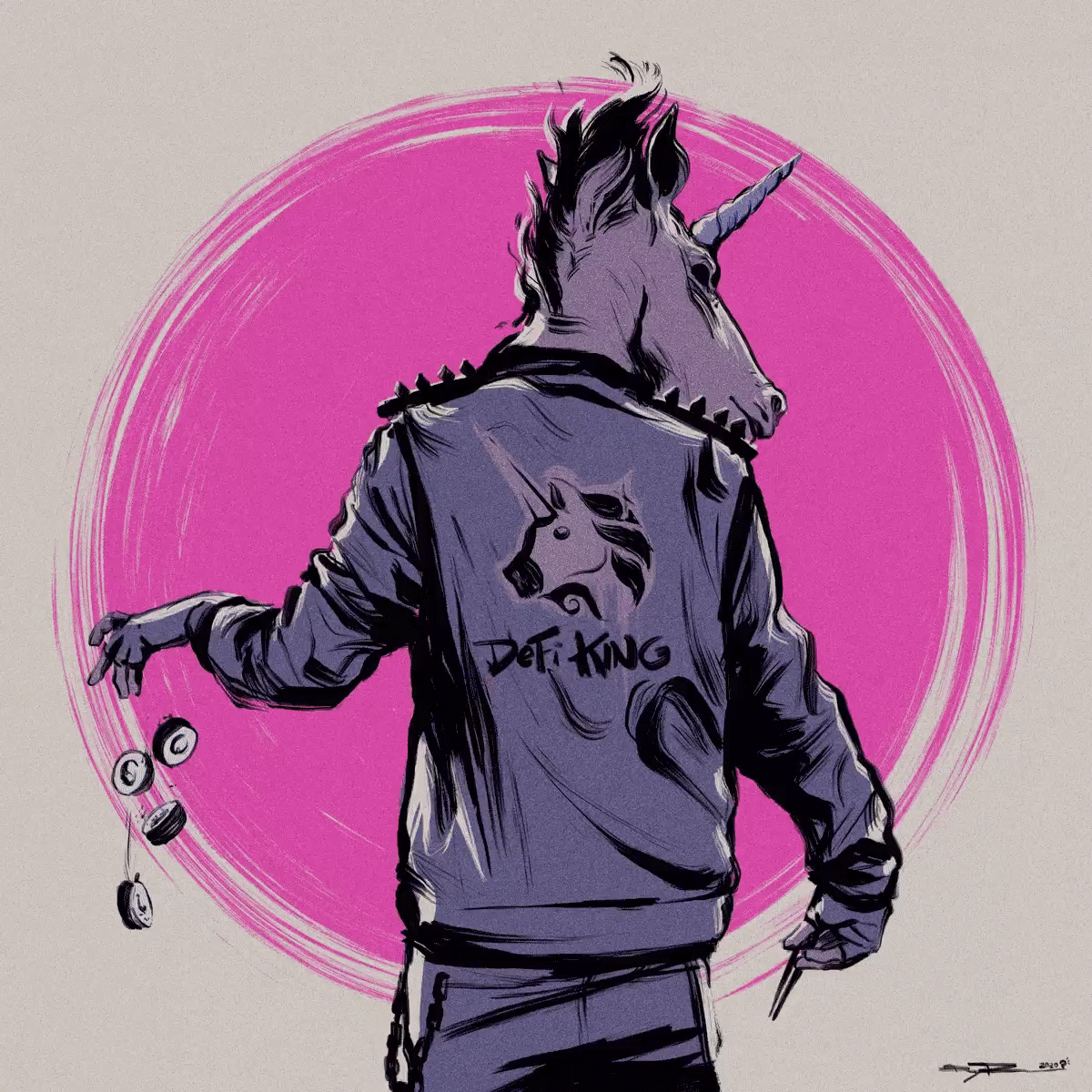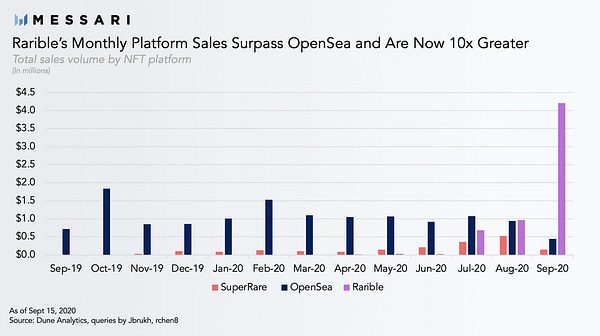NFTs Should Be Experiences, Not Just Products: IDEO CoLab's Ian Lee
Everything in the real world is about to be tokenized.
Hello Defiers! NFTs —non-fungible tokens meant to serve as representations of things rather than currency— are having a moment. But Ian Lee of IDEO CoLab Ventures says they’re not very interesting, At least not in the form they’re usually presented, that is, as products: tokenized art, tokenized game assets, etc.
NFTs are a lot more interesting when they become experiences. Lee proposes a few examples of what those experiences may look like: ownership which helps shape a person’s identity and reputation, badges to enable community membership, a way to help find a network of individuals with similar interests, a way to compose unique assets using an array of products.
“Everything in the real world will be turned into an NFT on the blockchain because it can,” Lee writes. But “what do NFTs uniquely enable that deserve to live on open, decentralized networks? And where will NFTs show up and make an impact on people’s lives in the next 5-10 years (versus 10+ years, if at all)?”
These are the questions he dives into in the following column.
Ian Lee is a Managing Director of IDEO CoLab Ventures, an crypto-focused venture firm backed by IDEO that invests and helps incubate early-stage crypto projects and protocols. Prior to IDEO, Ian was a Director at Citi Ventures, Citigroup's venture capital and venturing arm, where he led Citi's network of R&D Labs, an early-stage
Both paid and free subscribers receive full guest posts, but paid subscribers get them early. Paid subscribers also get complete access to The Defiant content and archive, and access to The Defiant Discord chat. Join the club! Subscribe now at $10/month, $100/year. Pay with Dai on this link.
🎙Listen to this week’s podcast episode with Jihoz from Axie Infinity:

🙌 Together with Zerion, a simple interface to access and use decentralized finance, Perpetual Protocol, which provides decentralized perpetual contracts for any asset, and HackAtom V, a two-week virtual hackathon organized by Cosmos.


NFTs Should Be Designed As Experiences, Not Products
We need to change the way we think about NFTs to unlock their full potential
By Ian Lee
Non-Fungible Tokens (NFTs) are back again. Well, sort of.
This week, the crypto community shifted its attention from DeFi, forks, and $UNI to NFTs like $SOCKS, $MEME, $FAME, and $NEUE and NFT platforms like Rarible, Mintbase, OpenSea, Zora, and Foundation.
NFTs have been around for more than two years, and just as DeFi is having its moment, they’re hot again.
What’s going on?


To me, it’s no coincidence that interest in NFTs skyrocketed after Uniswap retrospectively distributed 1,000 $UNI tokens (~$4,500 at today’s prices) to each holder of Unisock NFTs ($SOCKS) last Wednesday. Since then, demand and prices for well-known NFTs like $MEME, $FAME, $NEUE, and $TAPE also spiked.
Some are now saying NFTs are the next big thing in crypto. Others are utterly confused.
So which is it?
We Need to Look Beyond Digital Collectibles
Ever since the launch of Cryptokitties and ERC-721 two years ago, many have thought of NFTs in a very literal way: tokenized art, collectibles, products, and items.
They point to the size of the art ($64 billion) and sports memorabilia ($5 billion) markets, the small but exponential growth in NFT sales over the last month, and all of the things that are technically possible (e.g., fractional ownership).
Everything in the real world will be turned into an NFT on the blockchain because it can.


But should it? Does it need to be?
This leads to more important questions, like what is the ultimate purpose of NFTs to people and the world? What do NFTs uniquely enable that deserve to live on open, decentralized networks? And where will NFTs show up and make an impact on people’s lives in the next 5-10 years (versus 10+ years, if at all)?
These are the questions we should be asking to understand the potential for NFTs, what value they can create, and what NFT applications should be built.
NFTs As Experiences, Not Products
IDEO is big on art, products, and craft—so it should come to no surprise that our crypto team has been exploring different human-centered applications of NFTs from the beginning. We helped with the ERC-721 standard in early 2018 and built numerous NFT prototypes from 2018-2019 to better understand where the space was headed.
And after all these years, my personal conclusion is that NFTs are not interesting when they are just products—like a tokenized piece of art, collectible, or item—but they are infinitely more interesting when designed and built as enablers of a higher order end-user experience.
For example, selling digital art and collectibles as NFTs on a marketplace is less interesting than selling a limited quantity of virtual badges as NFTs that enable their owners to enter a private Telegram group, to connect with the creator and each other as part of a broader community.
Being able to buy and trade physical products as NFTs is less meaningful than an experience that enables consumers to build personal identities based on the products they’ve bought and held on to—and to leverage those identities to form new social networks and communities that can discover, interact, and engage with each other in new ways.
When we think of NFTs as experiences—not products—it completely reframes and opens up the design space for what NFTs are and could become. I believe that this will be critical for NFTs to unlock their full value and move beyond tokenized art and collectibles—so we can find and build new, more valuable applications of the technology standard.
Here are some thought starters.
1/ Identity and Reputation
How might buying, owning, holding onto, and trading NFTs enable users to construct new forms of digital identity and reputation? How might these identities and reputations—built with NFT transaction histories—be shared, discovered, and connected to other people, organizations, and brands? Could they enable new user and consumer experiences that don’t (or even better, cannot) exist today?
For example, if I bought all of the limited-edition sneaker drop NFTs, what would that say about me? What if I only bought Nike and Common Project NFTs specifically—would that tell you even more about me, what I liked, and who I am? What if I quickly flipped the Nike NFTs but held and never sold the Common Project NFTs. What would that tell you about me or consumers like me? What could now be done with that information?

NFTs will enable users to create new forms of identity, reputation, and self-expression. When NFTs are not built as isolated products but instead designed as an aggregated experience, they can form new pictures about a user or community—their likes, dislikes, preferences, hopes, wants, etc., in ways that are now provable with onchain histories. Today that information exists within companies like Amazon, Google, and Facebook—but that information is closed and cannot be openly built upon. NFTs and crypto will make that possible.
2/ Community Membership
How might buying and holding onto an NFT enable users to prove their membership or belonging to a particular community? How might users within a community be able to differentiate themselves based on the date they bought the NFT, the rarity of the NFT, or the level of the NFT? Could NFTs enable communities to not only prove membership but also form organizational structures?
For example, what if IDEO CoLab Ventures launched an NFT to all of our portfolio company founders, LPs, collaborators, and friends—by having our NFT they could access a private Discord channel (that uses Abridged’sCollab.Land) to connect and help one another. What if we launched different NFTs—one for portfolio company founders, one for LPs, and one for collaborators and friends—and each had different access rights and privileges. And what if each of those NFTs could be ‘leveled up’ by either IDEO (e.g., for collaborating with us on a project) or by staking IDEO CoLab Coins into the NFT, making some NFTs more ‘rare’ and ‘special’ than others, giving them unique privileges like advanced design support, office hours, access to our sprint programs, etc.

NFTs will enable new forms of community membership and organizations to exist. Right now, people are experimenting with this through personal and community tokens—NFTs will help take it to the next level.
3/ Collective Experiences
How might users receive NFTs as they participate in events, concerts, games, classes, conferences, programs, etc.? How might the collection of those experiences as NFTs enable people to connect in new ways and bond over shared, collective experiences across the Internet, across borders? How might these collections be used to recommend or discover new experiences and communities to be a part of?
For example, what if every crypto industry conference, event, hackathon, accelerator, program, and retreat issued an NFT to participants (e.g., POAP tokens), and these NFTs were aggregated and reconstructed into a new type of alumni and social network where people could find, connect, and help one another? What if special NFTs were also given to speakers, program facilitators, hackathon winners, or even people who entered a particular room, enabling people to further dissect a community to find people they have the closest shared experiences with?

NFTs will enable people to build an onchain history of experiences, and this will be used to find and connect with others on a more granular level. This could be applied across a number of settings: work, school, social events, traveling, hobbies, politics, affinity groups, retail, entertainment, and so on.
4/ Composable Product Derivatives
How might consumers use and interact with an NFT that represents a retail product? Or how might businesses use and interact with an NFT that represents an industrial product as part of their production process? How might the rights to that product—which is effectively a derivative—be utilized to improve the end-user experience as a consumer, or a business? Could the NFT be designed with mechanisms so that the consumer or business gets the product better, faster, or cheaper than if it were not tokenized? Could the NFT that represents a product then be combined with another product’s NFT to further customize, improve, or enhance the original product? Could these types of NFTs drive greater adoption of crypto because of their non-speculative use cases and value to consumers and businesses who want the product?
For example, what if I bought 1 NFT representing a high-end shirt from a manufacturer, but the per-unit price went down as more people bought the same NFT and the bulk order grew before all of the NFTs were redeemed for the physical shirts. Then, what if I could provide my 1 shirt NFT and combine it with the NFT from a digital artist to print her artwork on the shirt, resulting in a new NFT (that now represent the shirt with the digital artists’ print on it) that I can both redeem or sell on the open market for a higher price?

New forms of commerce and supply chains will emerge as a result of composable product derivates enabled by NFTs. Saint Fame DAO, Zora and Foundation are early examples of what this could start to look like—however, we will see ones in the future that focus on specific consumer and B2B products and supply chains (e.g., custom apparel, gaming, media, entertainment, aerospace, food).
Also, as these types of NFTs may be less susceptible to speculative activity, they may be more accessible and desirable to a broader set of consumers—and thus they may help drive adoption of crypto to a bigger population, faster.
A New Era and Model for NFTs
When we think of NFTs as experiences, not products, a new model for designing end-to-end experiences emerges, where NFT-enabled identity and reputation enables people to connect and form memberships, which in turn enable those communities to create experiences and artifacts that reinforce users’ identities.

As 74% of Americans (especially Millennials and Zoomers) now prioritize experiences over products, experience-led NFTs can’t come soon enough—they’ll unlock new forms of value and help bring crypto to the mainstream in ways that we haven’t seen to date.
We just need to start to look at and design NFTs differently.
—
If you’re working on an experience-led NFT project, please reach out. I’d love to learn more and see how we and our partners can collaborate.
Thank you to all of the founders including Kevin Chou (Rally, Forte), Kayvon Tehranian (Foundation), James Young (Abridged), and James Duncan (Abridged), our friends Jesse Walden (Variant), Electric Capital, and Delphi Digital, and my colleagues at IDEO including Tara Tan and Joe Gerber for providing feedback on this post.


